105TH GENERAL HOSPITAL, US
ARMY
QUEENSLAND AGRICULTURAL COLLEGE
GATTON, QLD
IN AUSTRALIA DURING WWII
![]()
The 105th General Hospital representing Harvard University in the Southwest Pacific Area was activated on 20 April 1942 in Washington D.C. The first of a series of promotions of Enlisted Men was made in May 1942, while the 105th was still stationed at the Staging Area of the Port of Embarkation in San Francisco. The 105th General Hospital sailed from San Francisco for Australia on 19 May 1942 on board the USS West Point.
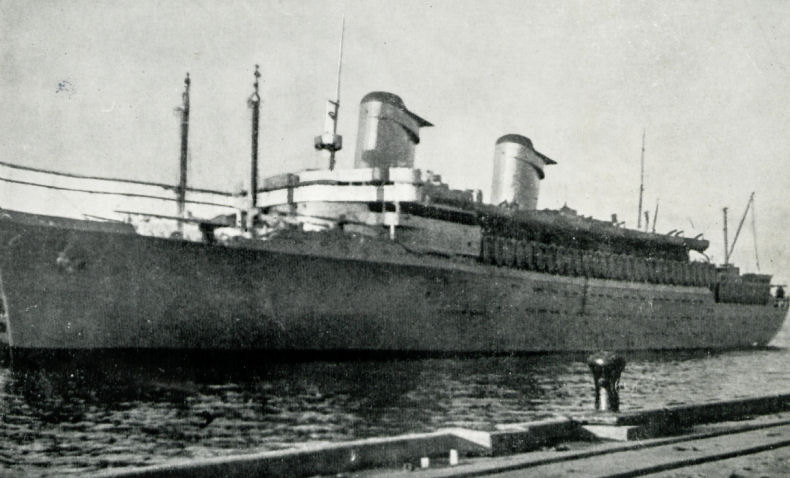
USS West Point
The 105th General Hospital arrived in Melbourne, Victoria, Australia on 4 June 1942. Colonel Raymond O. Dart was the initial Commanding Officer of the 105th General Hospital from May 1942 until February 1943. Shortly after arriving in Australia a large number of specialist ratings were converted to technician ratings, and thus a larger group of Enlisted Men became non-commissioned officers.
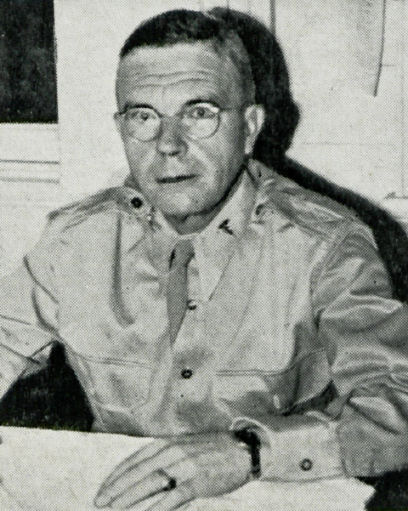
Colonel Raymond O. Dart
May 1942 - Feb 1943
After a 1,300 mile train trip from Melbourne, on 11 July 1942 they took over a small number of patients from the 153rd Station Hospital at the Queensland Agricultural College at Gatton west of Brisbane. The 153rd Station Hospital was relocating to their new posting at The Southport School.
The Queensland Agricultural High School and College moved to temporary building north east of the original campus. The 105th General Hospital took over their classrooms, dormitories, faculty homes and other college buildings which were converted by the US Army into hospital wards, mess halls, administration buildings and living quarters for the 105th General Hospital personnel.
During their early days at Gatton College they organised their administrative and professional staffs, and cleaned the existing buildings and cared for the 84 acres of land at Gatton College.
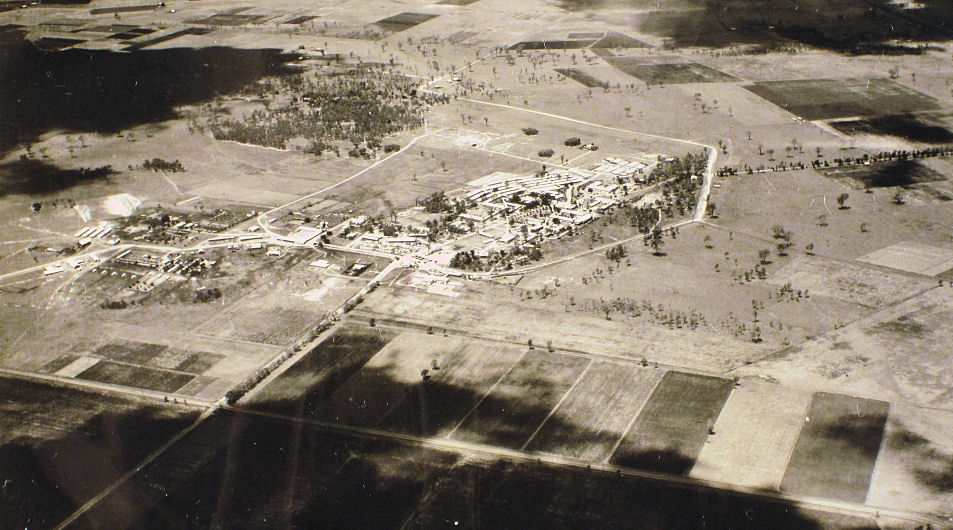
Aerial view of 105 General Hospital at Gatton on 26 Feb 1943
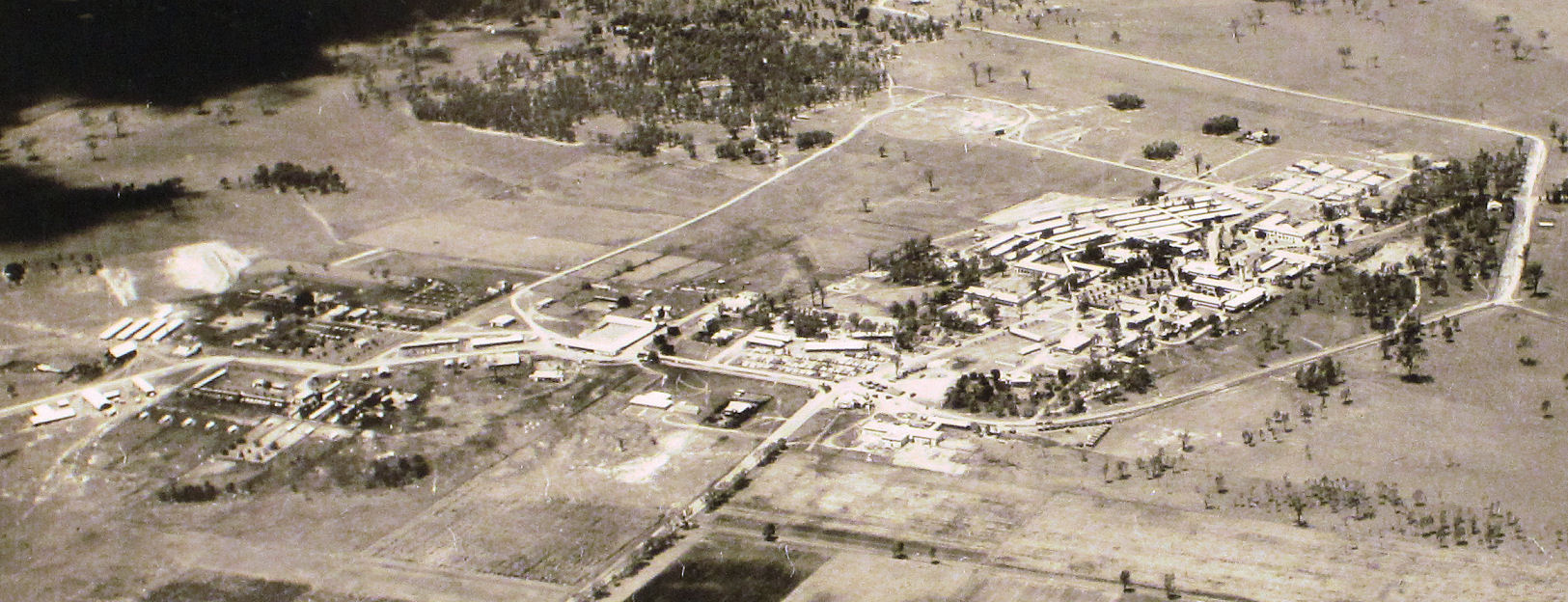
Closeup of the above aerial photo of 105 General Hospital at Gatton
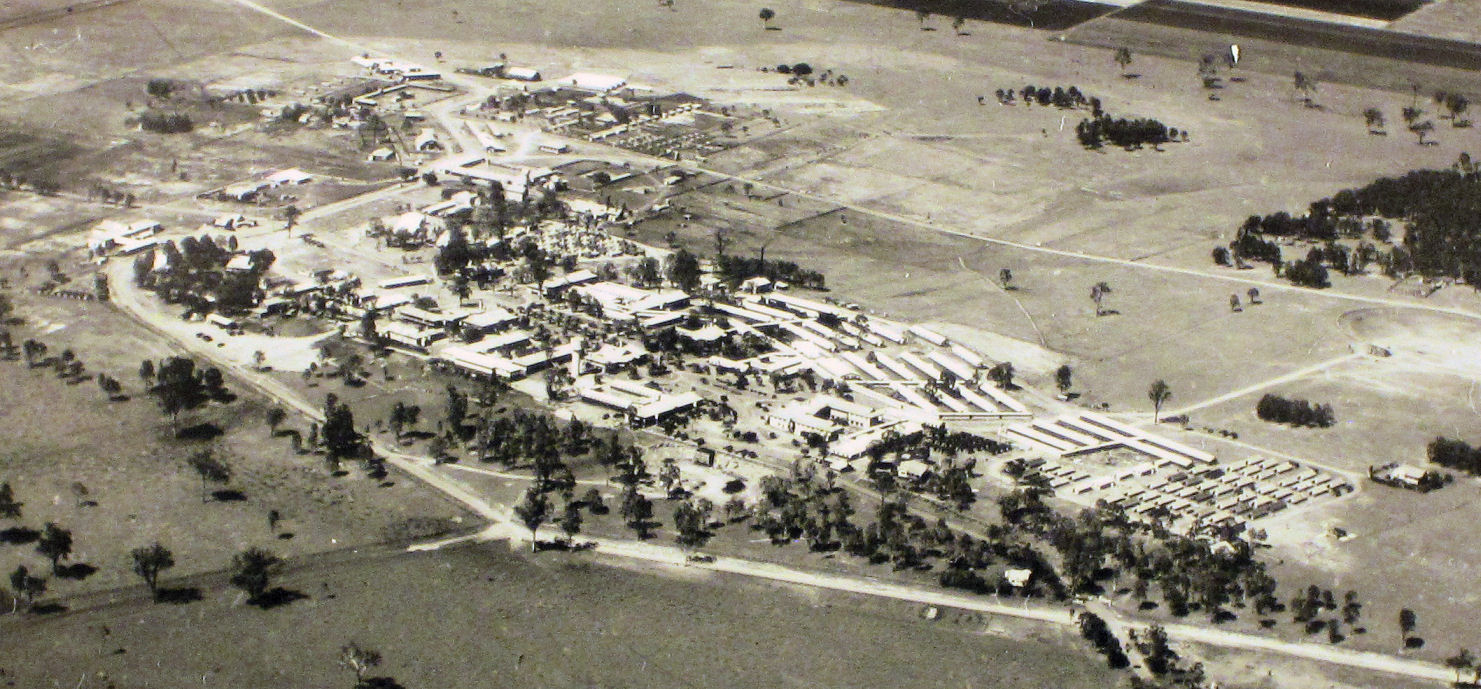
Aerial closeup of 105th General Hospital at Gatton on 12 September 1943
During the rest of 1942, they built new wards and huts and erected tents due to the rapid increase in staff and patients. They erected new quarters for Officers and Nurses, a Post Exchange, a building for the Provost Marshal, new mess halls for the Detachment and for patients, recreation halls, a receiving office, a craft shop and a shop for utilities. They laid lawns, garden beds, walkways and roads and erected fences. Red clay from a nearby riverbank was used to build sidewalks. Flowers were planted during winter and spring in time to bloom in December.
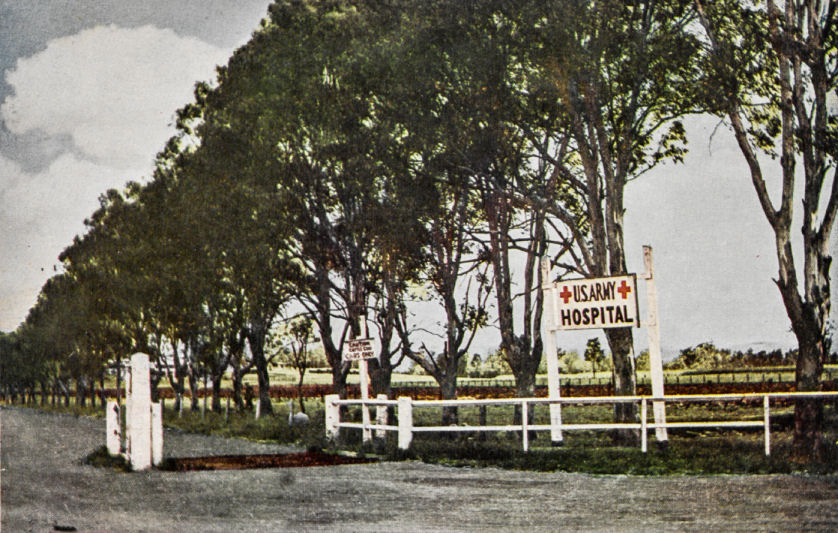
Entrance to the Hospital from the Brisbane – Toowoomba Highway
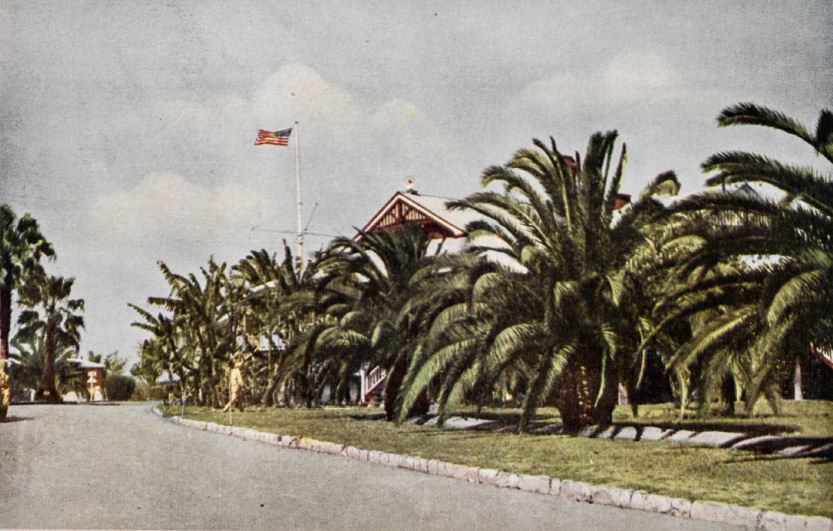
The road leading to the Circle and the flagpole
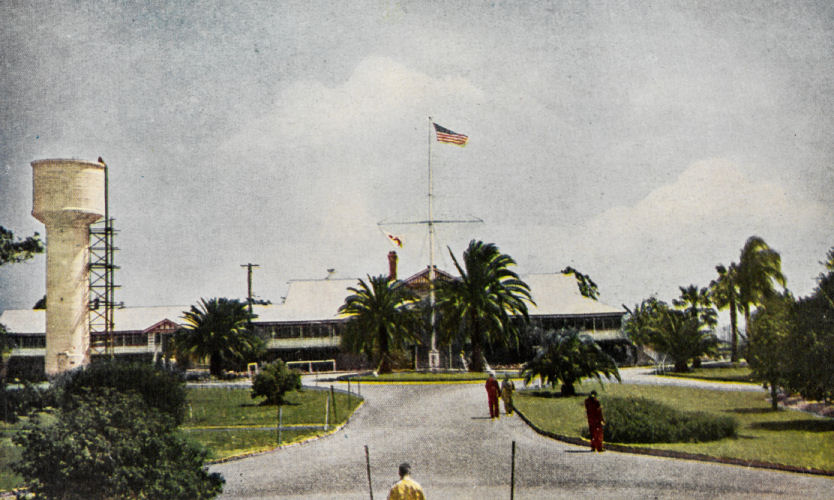
Headquarters building
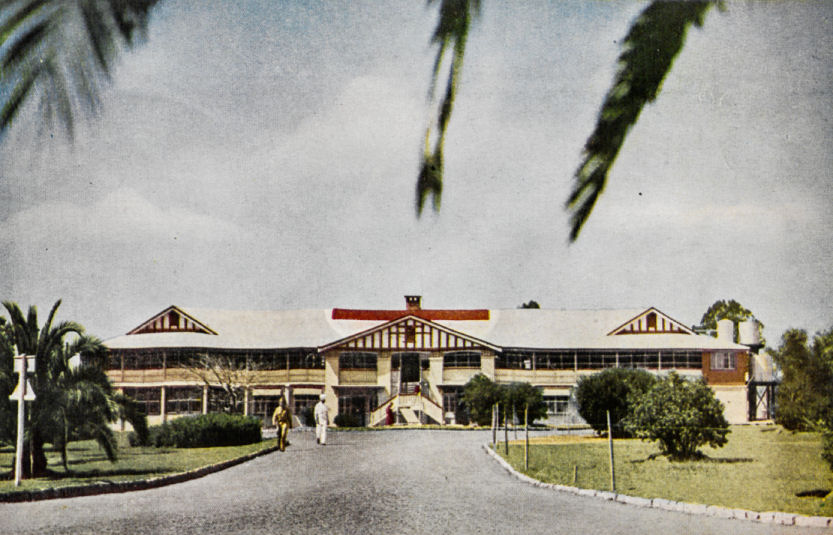
Shelton Hall
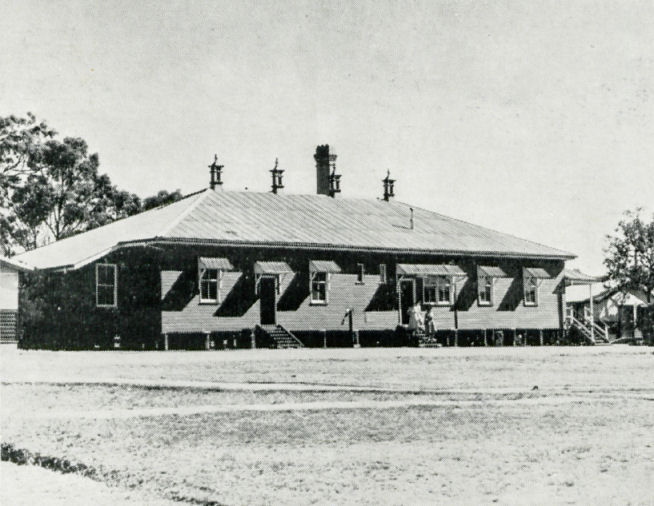
Medical Supply building

Neuro-psychiatric Ward
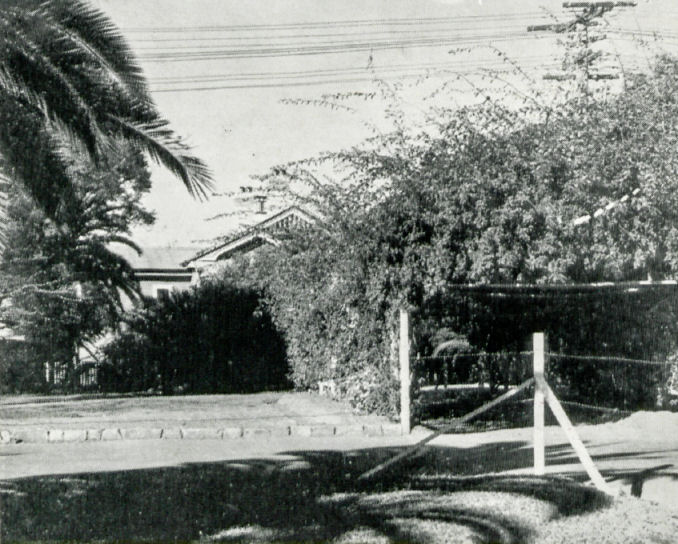
Murray House was used by the
Registrar's Office, the Offices of the
Chiefs of Medical and Surgical Services and the Post Record Office
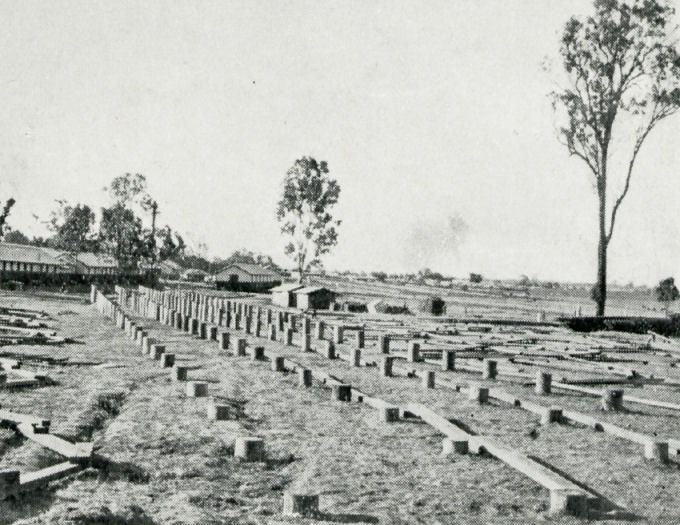
Stumps for a New Ward Block

A completed Ward Block
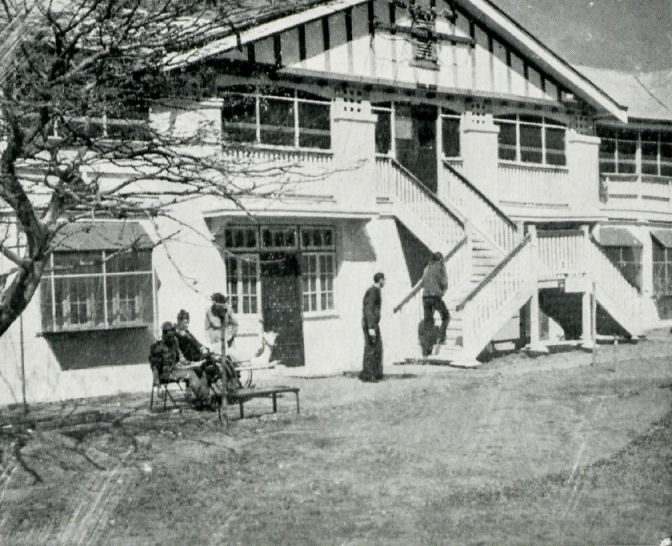
Shelton Hall whose College Classrooms were converted to Wards and Clinics
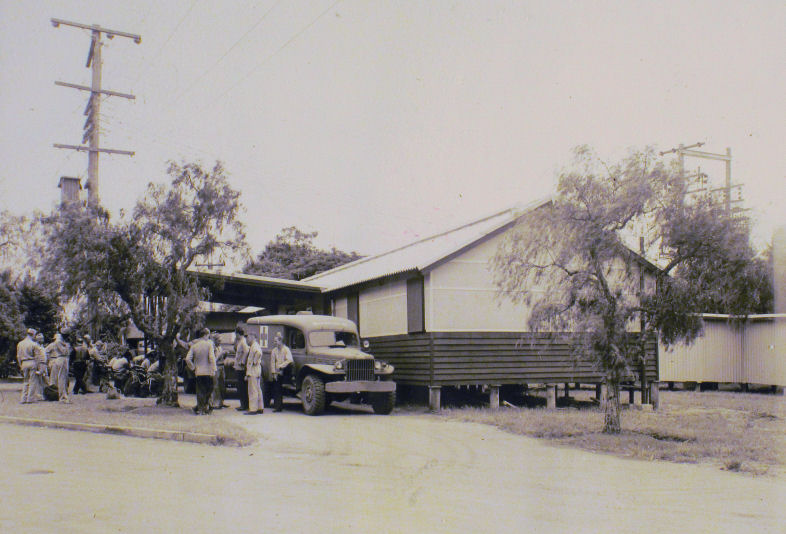
Receiving and Evacuating Building 92ft x 20ft on 16 Feb 1943
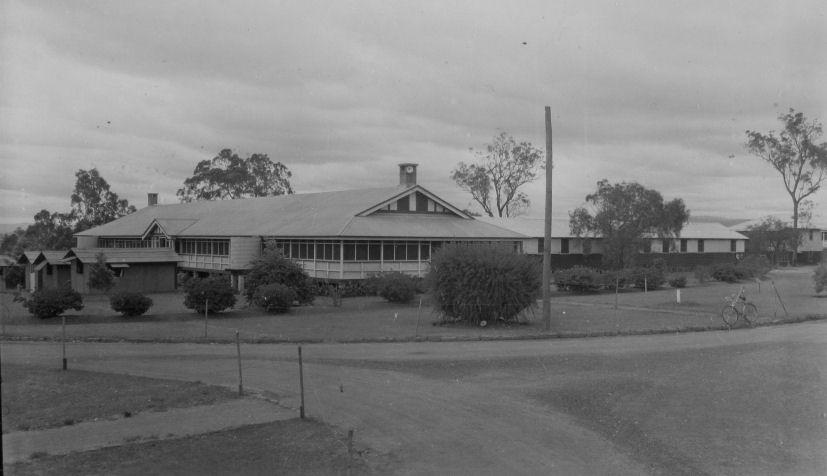
Officers quarters 100ft x 105ft on 16 Feb 1943
A large sewerage plant was constructed and the important buildings were connected to the sewerage network. Two wells were dug and water obtained from an adjacent river was purified using a chlorination plant. Elaborate measures were taken to eliminate the numerous mosquitoes plaguing the area. Flies were also a problem.
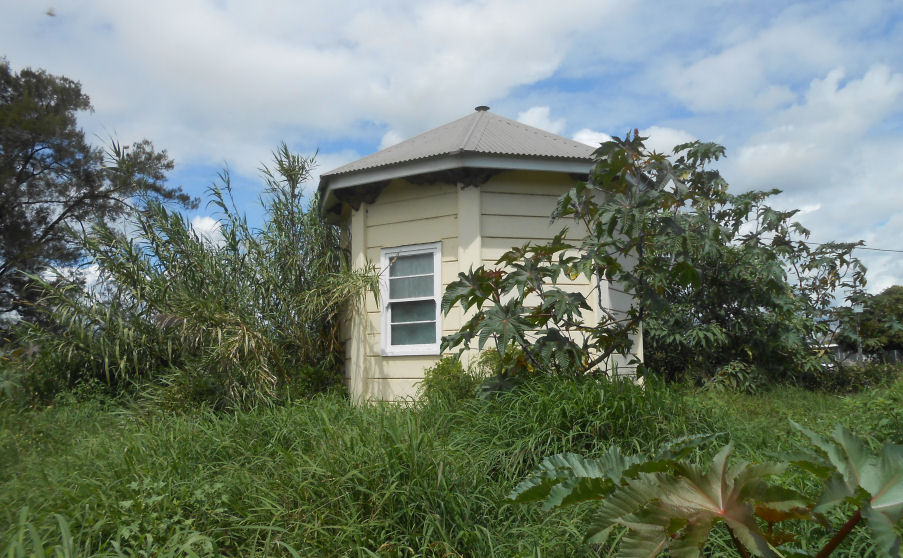
Photo:- Allan Tonks 23 Sep 2022
1942 Sewerage Pump House still located at Gatton University site
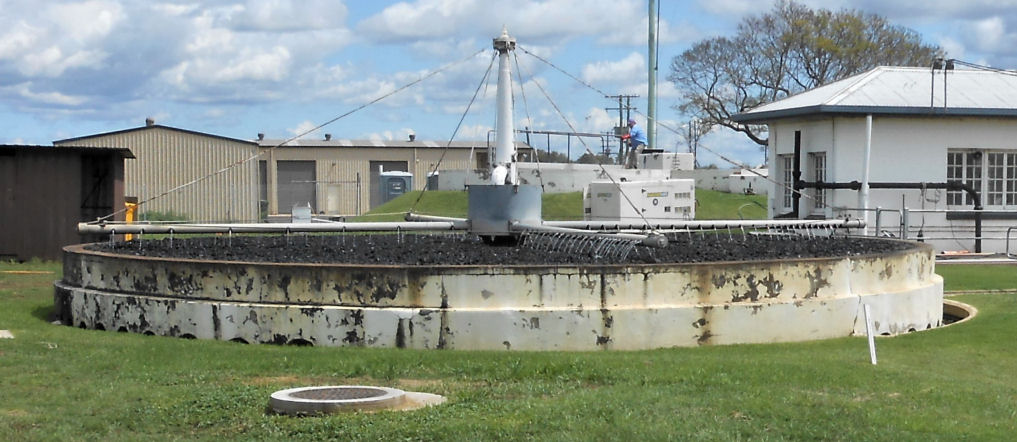
Photo:- Allan Tonks 23 Sep 2022
Sewerage infrastructure built in 1942 for the US General Hospital at Gatton
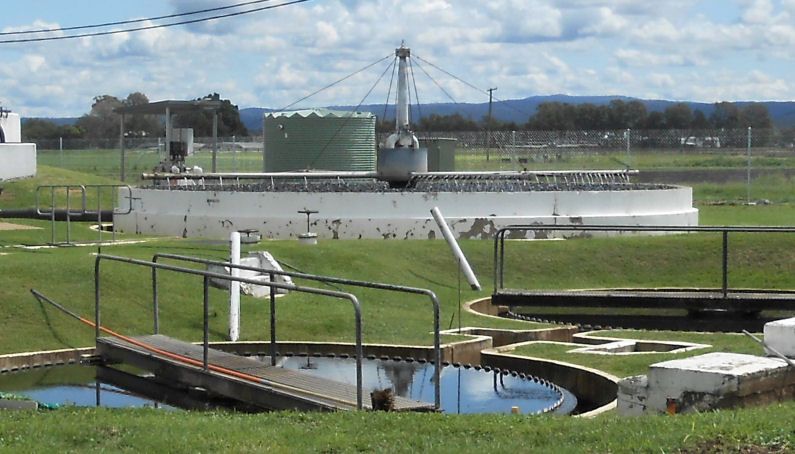
Photo:- Allan Tonks 23 Sep 2022
Sewerage infrastructure built in 1942 for the US General Hospital at Gatton still in use in late 2022
A severe wind and rainstorm on the evening of 22 November 1942, caused major damage. The Detachment Area and the Officers’ huts were badly damaged. Power, light and telephone lines were down all over the site, luckily no one was injured. There were many holes in walls and ramps caused by wind-borne branches, sheets of metal and fibrolite, or lengths of timber.
The severe storm struck twelve days before an important inspection by General Donaldson, the Commanding Officer of Base Section 3 on 5 December 1942. The personnel of the 105th General Hospital did such a great job cleaning up after the storm that General Donaldson wrote a letter of Commendation following the inspection.
A few weeks after the storm, the Tent Area was inundated by a deluge of heavy rainfall. It rained for several days, causing the hospital’s drainage system to overflow and made Tent City resemble a Mississippi flood town.
During 1942, the 105th General Hospital supplied all the Officers and Enlisted men to establish two new Portable Surgical Hospitals, including their Commanding Officers. This led to an increase in the numbers of new personnel being posted to the 105th General Hospital.
In October 1942, Captain Charles P. Sheldon replaced Captain James M. Gilpatrick as Adjutant and he later became Executive Officer until he left the unit to accompany Colonel Dart to New Guinea. Major Kuykendall, who preceded him as Executive Officer, became the Commanding Officer of the Detachment of Patients and later became Registrar, replacing Major Allan L. Grafflin, who succeeded Captain Sheldon as Executive Officer.
Lt. George D. McAfee, Major Charles D. Branch and Lt. George A. Seeley later became Adjutant in the order named.
Between November 1942 and April 1943 approximately 150 members of the Detachment were rewarded for diligence and efficiency consistently demonstrated by receiving a promotion. The first promotions of Officers and Nurses began in October 1942 and by August 1943, some 25 of them had received a promotion.
The numbers of casualties arriving from the New Guinea campaigns rose in 1942 and early 1943 making it one of the most active periods for the hospital. By this time, the Hospital’s administrative and professional departments were operating efficiently.
Lieutenant Colonel Augustus Thorndike succeeded Colonel Raymond O. Dart as the Commanding Officer of the 105th General Hospital on 19 February 1943 when Colonel Dart became the Surgeon for Base Section 3. Major Edwin F. Cave replaced Lt. Col. Thorndike as the Chief of the Surgical Service, and when Colonel Thorndike left in January 1944 for his new role in the Surgeon General’s Office, Lt. Col. Cave became the Commanding Officer. Major John H. Harrison then became Chief of the Surgical Service.
From their departure from San Francisco, the Enlisted Men of the 105th General Hospital were under five Detachment Commanders:-
Captain Lloyd R. Evans
Lt. George A. Seeley
Capt. (later Major) Thomas E. Botsford
Capt. Littleton L. McCharen
Lt. William J. Mullane (took command in May 1944)
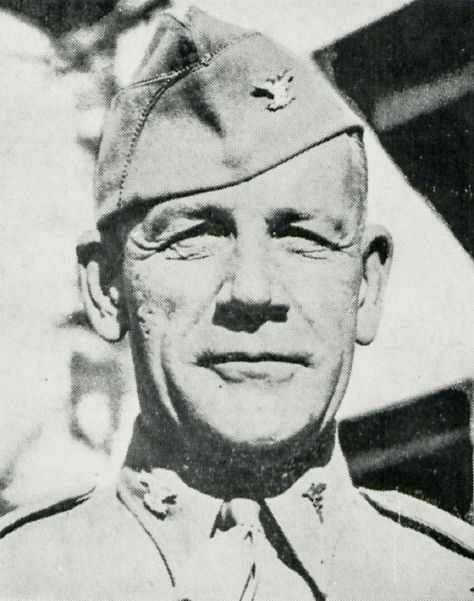
Colonel Augustus Thorndike
Feb 1943 - Jan 1944
Buildings to house the Red Cross, Physiotherapy and Laboratory were completed in 1943. Work was commenced on the new Clinic Surgery and additions were made to the Officers’ and Nurses’ quarters and the Detachment Tent area was completed.
A large number of patients were cared for in 1943 and many of them were evacuated to the USA. In March 1944 the number of battle casualties at the hospital peaked.
Dances for the Enlisted Men were held monthly in nearby towns. There were also frequent picnics organised. Well organised committees held entertainment activities for the Officers and Nurses. The Red Cross were credited with organising great Christmas parties in 1942 and 1943. Athletic teams from the hospital competed well in Baseball and Basketball competitions with other teams in the general area.
Frequent inspections and reviews were held involving all Enlisted Men, Officers and Nurses.
The Commanding Officer for the 105th General Hospital in 1944 was Lieutenant Colonel Edwin F. Cave.
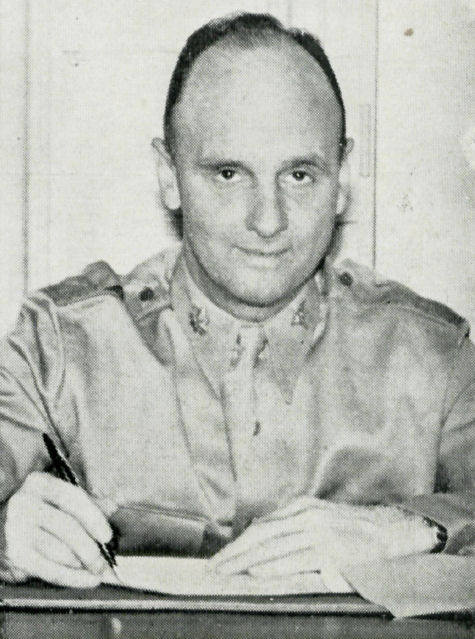
Lt. Col. Edwin F. Cave
Recreation Officers Captain Branson, Lt. Sheehan and Lt. Keim with the aid of their non-commissioned officers accomplished much in alleviating boredom and providing entertainment.
A Post Exchange or PX was established where duty personnel and patients could buy tobacco items, toilet articles, confections and other products. The PX initially operated from a small building in the rear of the Headquarters Building, but soon a newer and larger building was erected.
Movies were shown five or six nights a week in the Theatre, with the movies being changed at frequent intervals. Australian professional entertainers under the auspices of the U.S.O. made numerous appearances on the stage and the occasional well-known entertainers from the USA also gave performances. Artie Shaw and his Navy Band played there in early September 1943. Occasional Officer-and-Nurse dances were also held in the Theatre. Dances for Enlisted Men were held monthly in adjacent towns.
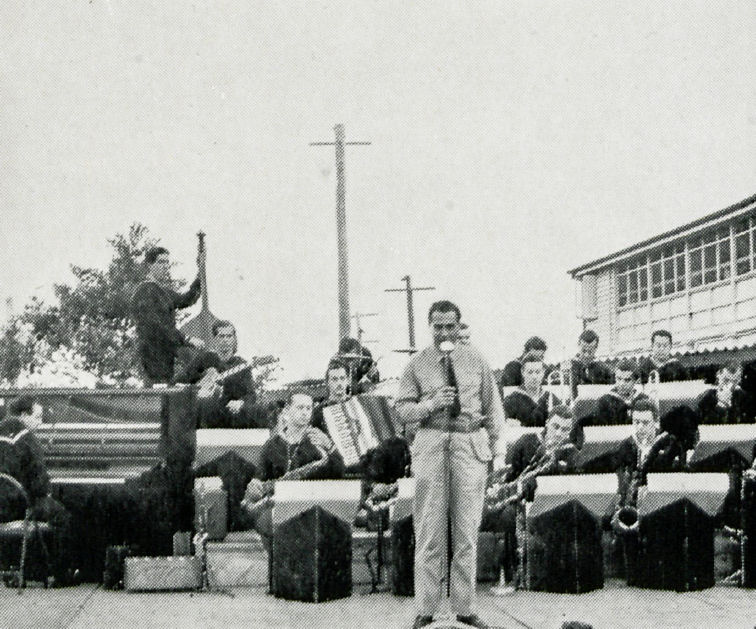
Artie Shaw and his Navy Band at Gatton in early September 1943
The Officers and Nurses held occasional picnics during the warmer months and the Enlisted Men had pig-roasts once a month with roast pork and beer being served.
Trucks ran daily to surrounding towns to allow the hospital personnel to visit the local towns which contributed to raising the morale at the hospital.
The hospital’s tennis court which was surfaced with sand from ant hills was constantly used. A baseball team was formed and the hospital’s basketball team, which had its first game in June 1943, was reportedly one of the best teams in the SWPA. Other recreational activities included:-
• Horseshoe throwing
• Ping Pong
• Bicycle riding
• Horse riding
• Golf on a nearby golf course
On 1 May 1943, the first group of Enlisted Men were granted leave and each week, as one group returned, another departed, so that after several months most of the Detachment had enjoyed 7 days of leave. Prior to this, the personnel had been allowed a 36 hour pass every two weeks except when the hospital was too busy to allow the granting of leave passes.
The American Red Cross arranged all types of entertainment, provided cigarettes, matches, confections and writing paper and performed innumerable personal services such as contacting relatives, obtaining information essential to the mental well-being of the patients, and even loaning money.
One of the most important innovations at Gatton was the establishment of the Patients’ Reconditioning Program, which was a program to rehabilitate patients so as to return them to duty in excellent mental and physical condition. The Program included graded exercises, games, drill, indoctrination and entertainment. Strict military discipline was maintained within the Reconditioning Detachment. A large vegetable garden was established primarily for the purpose of affording outdoor exercise to convalescents.
Those whose were found to be incurable or their complete recovery was likely to be over an extended period were either evacuated to the USA or place don limited service duty, depending on the degree of their incapacity. By May 1944, servicemen from New Britain, the Admiralty islands and advanced points along the north shore of New Guinea lay in beds formerly occupied by evacuees from the Buna-Gona battle of late 1942. By July 1944, nearly 19,000 patients had been admitted to the hospital.
Lectures in the prevention of malaria were held at regular intervals and nurses were trained in anaesthesia and dietetics. Large numbers of Enlisted Men enrolled in specialised school to learn how to typewrite or perform elementary nursing. Officers were rotated between Section of the Services so that the might extend the scope of their knowledge throughout varied fields.
An Information and Education Office was established headed by Captain Moore with the aid of Lts. Hardy, Folks, and Metcalf who all spent periods of detached service from GHQ.
REFERENCE BOOKS
"105th General Hospital - Two Years Down Under, July 1942 - July 1944"
ACKNOWLEDGEMENTS
I'd like to thank Allan Tonks for his assistance with this web page.
Can anyone help me with more information?
"Australia @ War" WWII Research Products
|
© Peter Dunn 2015 |
Please
e-mail me |
This page first produced 23 September 2025
This page last updated 24 September 2025